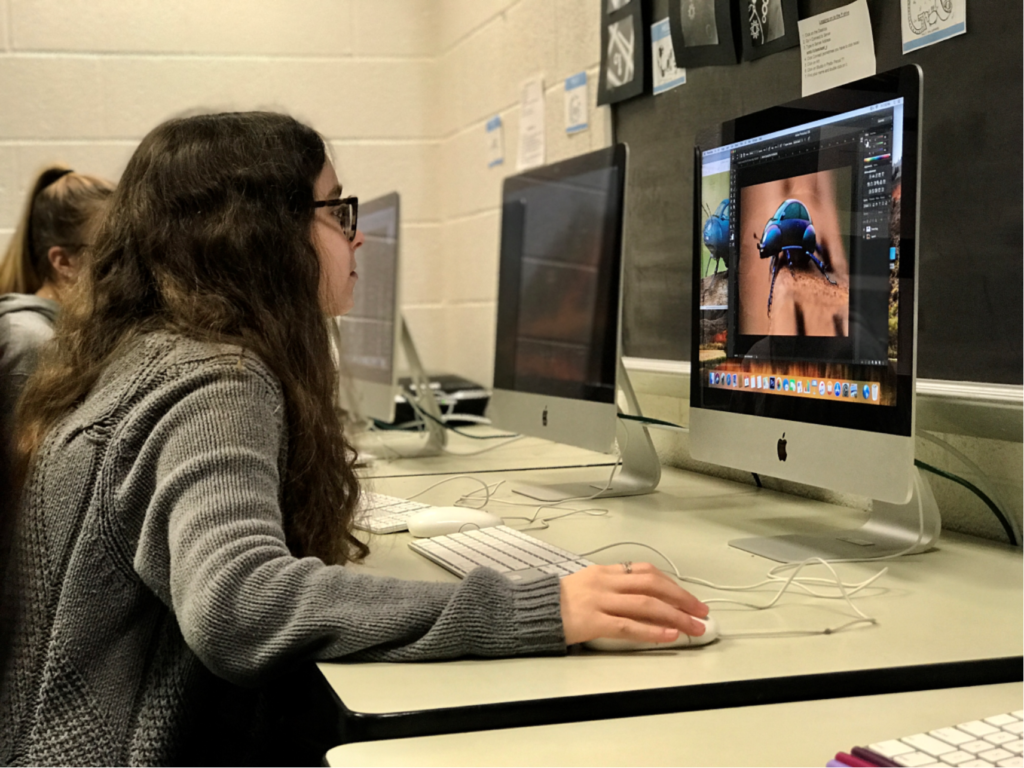By Aditi Arun and Olivia Rooks

The recent addition of two turf fields, upcoming renovations to the music wing, and various other projects, have left many students wondering, “what about art?” For as long as anyone can remember, our art department has been lacking in funding.
In fact, as many students know, art (and photography) classes charge art fees in order to be able to buy enough supplies. The amount of funding allotted by the school is famously enough for only a tube of acrylic paint per person, according to Ms. Wilson, one of the art teachers.
That’s about five dollars per person. “Without the funds supplemented by the students ($20-25), the art classes wouldn’t be able to function,” Ms. Lewke stated.
To get a better understanding of how department funding is allocated, we decided to interview our principal, Mr. Swatland. According to him, the reason other departments, like science, get more funding is because the products they use are consumable. For example, the rats used for dissection in biology are thrown out. Biology also requires a certain amount of lab hours as a course requirement, therefore their supplies for such labs take precedent. In contrast, art supplies, like brushes, can be reused, so the arts thereby get that extra money deducted.
However, things like paper and paint are used year after year, without ever coming back. When asked about this discrepancy, Mr. Swatland reasoned, “art is.. a performance based class. You keep everything you do.” He later clarified that the artwork created is the students’ own property (rather than the rats in biology, which are the school’s property). Thus, it is imperative that students contribute their own money to the art department. The artwork created is not entirely the school’s responsibility, as students’ artwork is not directly funded by the school. It is the students’ to own, and therefore to pay for. However, to them, this means that the students have to pay for their own artwork. Mr. Swatland compares it to the woodworking classes in which the students pay for their own wood. The wood, and thus the project, is the students’ property.
To this extent, the art teachers agree as well. When asked about the practice of lab fees, which students pay every year, Ms. Lewke, the photography teacher, agreed with the philosophy that students should pay some of their own costs. However, rumors of the lab fees being removed are now in circulation, leading to confusion amongst the teachers. If it is meant as a signal that the department is to be funded more, it is welcomed, but teachers are apprehensive at how removing art fees might take away student responsibility in a department that is often taken for granted.
In the line of other reforms, the school is also planning to take away the iMac lab in the photo room. The reason cited for this, apparently, is that the iMacs have a different operating system than the PCs everywhere else in the school, which makes it difficult for our IT specialist to reset all the computers every summer. The iMacs also have to be recycled every few years, in accordance with Erie 1 BOCES. When interviewing some of the students that have used the iMacs, as well as Ms. Lewke, they said they prefer the iMacs, which much of the industry uses, over the other computers currently in the school. Also, students who have gone into art related fields used Macs in college, so those who have never used one before have a disadvantage as compared to other students. Being able to use such equipment helps prepare them in the future. The Macs, as they are referred to, also don’t have as much lag compared to the few other computers placed in the photo room, which is helpful when creating artwork, especially while using the drawing tablets. Apple also has various amenities that make these computers useful for creating artwork, such as additional shortcuts.
There is a regulatory mess of reforms being proposed, and teachers as well as students have mixed feelings about these reforms. However, they all agree that the school should take a more active approach to supporting the art, and our art department. The current funding is inadequate, and requires art students to run on outdated, worn-out supplies, regardless of their current level of study.
In our interviews with some of the students and staff at the school, we asked why they thought art was important. A few of the responses said that art can help people express themselves, in ways that other forms of communication can’t and these art classes mean a lot for them.
One art student said that although she may not be very good at art, she appreciates the beautiful works that others create, which can allow one to see the world through another lens. Another mentioned that art can help people express themselves, and show their passion. Ms. Lewke mentioned that art, especially photography, can help students learn valuable skills such as problem solving, trial/error, failure, and the creative process, ie, how things need to be done. It’s not something easily done, and it develops skill, discipline, and fulfillment.
The lack of funding for art departments in high schools is widespread. It is not specific to this school; East is just an example of a larger problem, and even then, East is much better off than many schools across the country. Many simply don’t have art programs.
But schools that integrate A+ art programs have higher achieving kids, more focused kids and teachers, better attendance, more parent and community involvement, higher standardized test scores, decreased disciplinary problems, and better service for a greater proportion of lower income and ethnically minority students.
Art programs are usually the first to get cut, as they aren’t viewed as important. But, how much better could we be if art had more of a priority and more funding?
